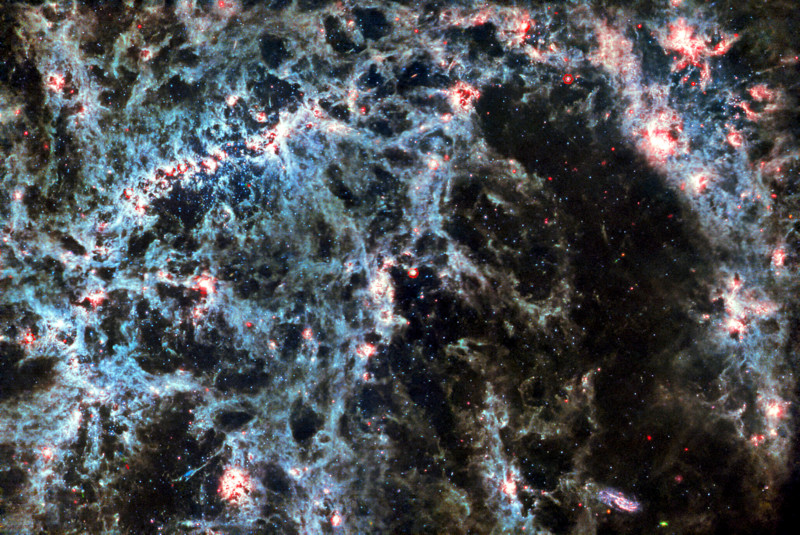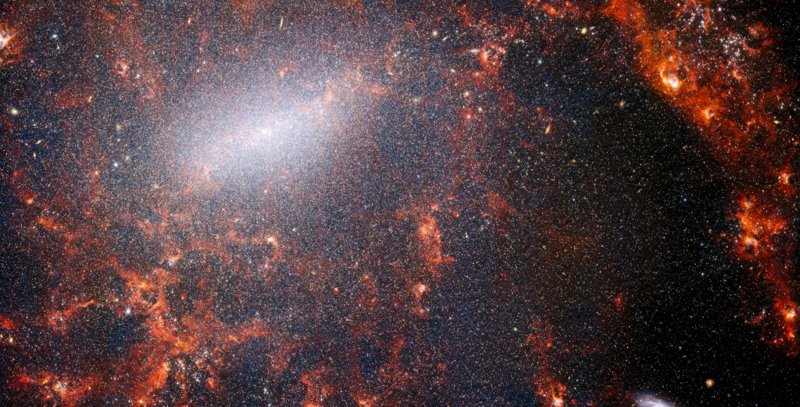Galactic Layers
Composite of near & mid-range IR images showing dust, stars, and clusters (credit: NASA/JWST)
Infrared light comes in near, mid, and far/thermal IR wavelengths. The James Webb Space Telescope (JWST) can view planets, stars, or galaxies in these layers with its IR sensors. NASA has released images captured in the near and mid-range infrared to illustrate the differences in details that can be observed.
According to the space agency, all the stars and other structures in the galaxy cataloged as NGC-5068 were captured using the JWST's infrared cameras. The galaxy’s massive population of stars is the most dense along a bright, central bar with gas clouds filled with dense clusters of young stars. An enormous gathering of older stars makes up the galactic core. Each IR view shows different galactic details. For a sense of the distance the JWST can view such objects, galaxy NGC-5068 galaxy is 17 million light years distant from Earth. WHB


Mid-infrared light exposing new star formation (credit: NASA/JWST) Near-IR light exposing dust, gas clouds, & dense star clusters